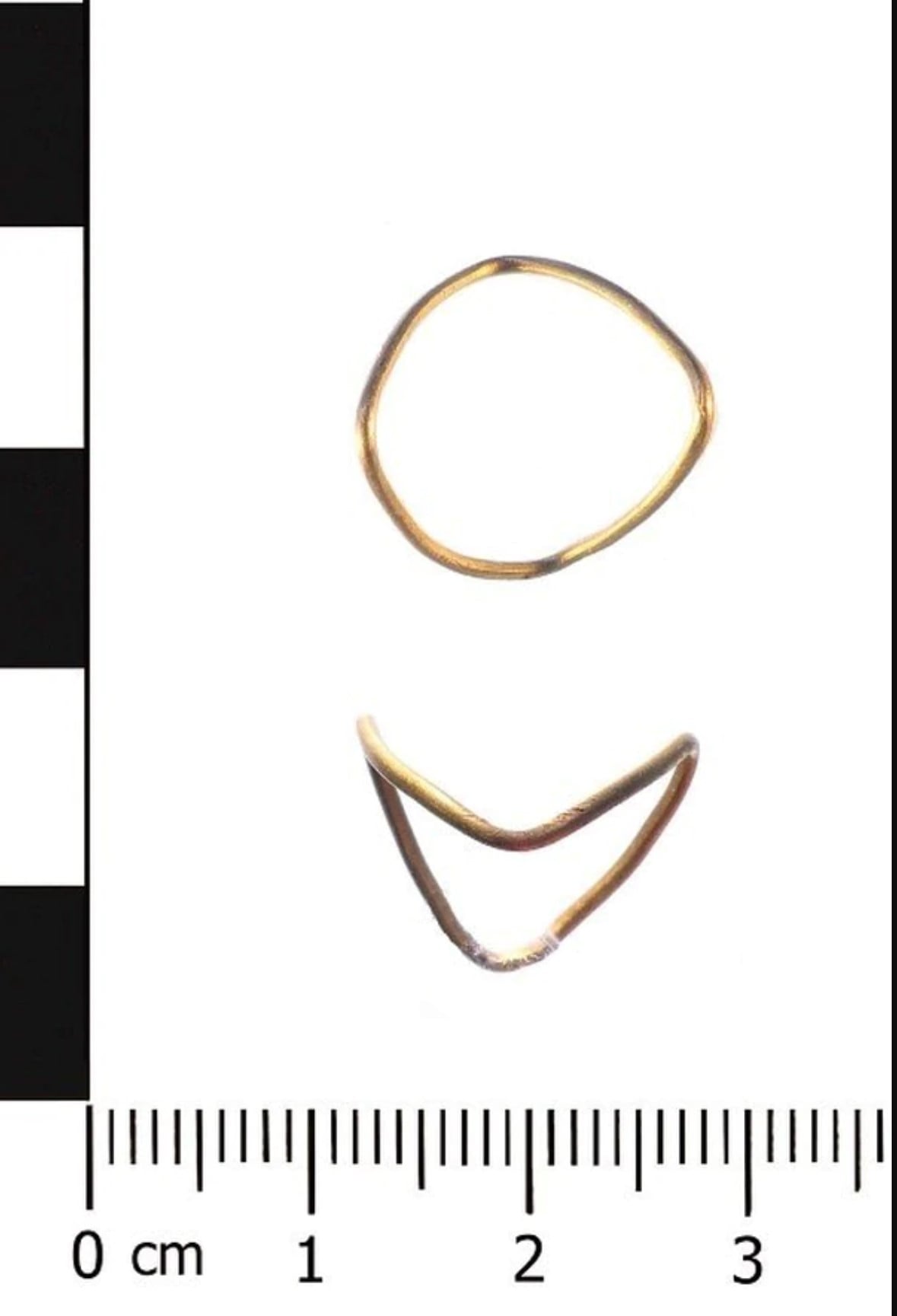Ahoj, a moc děkuji za počtení... já dnes faléru, 2hal. r-u, atd. nebojte zítra to nebude na LP... 
More unique detectorist finds declared treasure
Categories: Finds and rescue research abroad , Nálezy nejenom s detektorem ve Velké Británii a Irsku
Gold ring from 400 - 200 BC, which is only the sixth of its kind to be found in England, and a medieval silver brooch with two centaurs dating from between 1200 and 1300, have beenThe Covid-19 crisis was investigated by video conference between Coroner John Ellery of Telford & Wrekin, experts from the British Museum's Portable Antiquities Scheme (PAS) and one of the finders.
The silver, heavily gilded and beautifully crafted, almost unworn brooch with two carved centaurs was found by detectorist Mark Lambert in a field near Bridgnorth. The brooch is hexagonal in shape, measuring 24mm x 27mm and weighing 6.1 grams. The main part consists of two opposing centaurs joined by a hind leg, with the upper human half forming the edges. The original needle is apparently lost. Such openwork brooches with relief forming pairs of interlocking humans or animals from 13. There are only a few known in England in the 19th century - but none are as detailed as in this case.
Experts believe that the brooch may originally have been fitted with a switch pin, perhaps wrapped around the arm or body of one of the centaurs - but it may also have been alternatively sewn directly onto the garment: "Due to the small size of the brooch, there is a huge amount of carved detail; particularly around the face and head, showing considerable skill and skill on the part of the maker. The brooch has almost no wear and tear and looks almost as good as the day it was lost (around 800 years ago)," Shropshire area liaison officer Peter Reavill told the BBC.
The ring was discovered at Frodesley in south Shropshire by detectorist Christopher Mussell. It is only the sixth of its kind ever found in the UK. Experts at the British Museum examined the ring using non-destructive X-ray fluorescence and found that the surface composition consisted of 85% to 87% gold and 8% to 10% silver, with the remainder being copper.
The approximately 2,500-year-old gold jewellery in the shape of a curved letter D with a simple cross-section without decoration is very similar to rings found in Switzerland. Therefore, it is also quite possible that the ring was imported from the continent or was made as a local period copy, said experts from the PAS system, which records public finds. "Iron Age artefacts made from precious metals are very rare in the UK," explained Peter Reavill. He added:
"We know that the county has an amazingly rich history and specifically Iron Age archaeology with numerous important forts. What we don't have is a great understanding of where these people lived, traded and how they behaved. This small personal item sheds a ray of light on the person who once wore it. We will never know his name or what he thought or what he looked like, but a little bit of who he was can be displayed in the museum for others to see. Responsible searching with metal detectors has increased the number of finds over the last 20 years and it is great that Shropshire Museum is acquiring these finds through PAS".


Sources: shropshirestar.com, dailymail.co.uk, msn.com, bbc.com
The article is included in categories:



